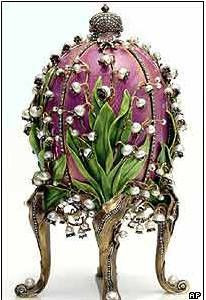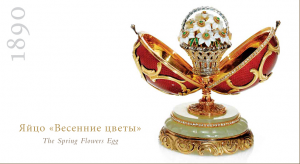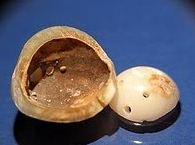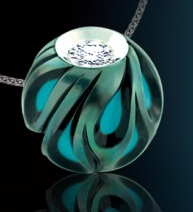One of the most frequently asked questions by pearl and bead stringers and by our clients is how to determine if the pearls used in necklace strand or in a piece of jewelry are “real.”
Years ago when I earned my GIA certification in Pearls, this question wasn’t too difficult. Akoya, the Japanese pearl produced from the mollusk of the same name, was king. Freshwaters were just beginning to flood the market and South Seas pearls, while available, weren’t produced in the volumes and colors that are available today. Imitation pearls tended to be Majorica or plastic and it was usually possible to tell at a glance if the pearls were authentic.
Now, a plethora of pearls are available. Chinese freshwaters range from extremely high quality to commercial grade. Akoyas, while still a force, no longer reign as the standard against which other pearls are measured. Producers of South Seas pearls have appeared in Australia, Vietnam, and other countries not traditionally associated with South Seas pearls.
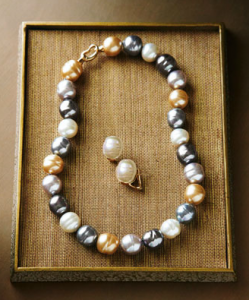 While the basic methods of producing faux pearls don’t appear to have changed much in the last couple of decades, there are more pearl imitations on the market and producers have learned how to better simulate real pearls.
While the basic methods of producing faux pearls don’t appear to have changed much in the last couple of decades, there are more pearl imitations on the market and producers have learned how to better simulate real pearls.
As an example, the Majorica pearls on the left are from the website of a very upscale department store and I should add are sold with no intent to deceive. At a first glance, they might appear to be authentic especially because a number of the pearls have circles around their diameters which are characteristic of some Chinese freshwaters.
However, a basic visual examination will yield the conclusion that these are fake pearls. I explain below.
One solution to the question of whether pearls are real is to send them for testing to the Gem Labs of the GIA (Gemological Institute of America) for analysis. This wonderful laboratory has very sophisticated means of testing pearls and continually upgrades its technology. In April, for example, it introduced micro-CT X-ray units that can provide high definition 3-D images of pearls allowing its technicians to better study their internal growth structures. This type of technology is vital because the only safe and non-destructive way of studying the interior of a pearl is with some kind of x-ray. The GIA conducts other tests as well to determine if the pearl has been treated, for example, and to determine its color origins.
But, for most of us, it’s not cost-efficient to send pearls off to the GIA labs for analysis.
However, there are tests you can conduct yourself without any equipment. For the most part, these tests rely solely upon your eye to determine whether the pearls are real.
- Examine the pearl for flaws: If the pearl appears to be flawless, it is probably a fake. Even on extremely high quality pearls, there is usually a flaw, a tiny dimple or pinprick, for example.
- Examine the pearl strand for the sizes of individual pearls: Although producers attempt to match pearls for size, they are rarely identical.
- Similarly, note the shape, luster and color of individual pearls on a strand. As noted, pearl manufacturers try to match pearls, but there are minute differences between them even on the best matched strand. Again, pearls that show identical characteristics should be suspect.
- Examine the pearl’s overtone: Overtone is one of the colors you’ll see on pearls. Overtone is the color that floats on the surface of the pearl and you’ll see a variety of overtones including green, rose and silver. Typically overtone will not be present on fake pearls and if it is, all the pearls will have the same overtone. You will frequently see several different overtones on a single strand of real pearls.
- Hold the pearls in your hand. If they’re very light, they may be filled with wax or made from plastic.
- Finally, there is the tooth test. Take the pearl, rub gently against the edge of your front tooth. Be sure to do this gently so you don’t run the risk of damaging the pearl. If it feels gritty or sandy, it’s probably real. If it feels smooth, it’s probably an imitation. There is an important caveat to this, however. Back when I first started out as a pearl dealer, the tooth test was considered by many experts to be 99% reliable. However, now some imitation pearls can feel gritty and cultured pearls can be polished. So, combine the tooth test with the other examinations suggested above.
In the pearls pictured above, the circles around their diameters might suggest they are real. In addition, the manufacturer seems to have varied the sizes and shapes just enough to suggest authenticity. However, there is no overtone, especially on the black and white pearls where we would expect to see rose and/or green. Moreover, the luster appears identical on all the pearls. If we were able to handle the pearls, I’d wager that we’d find none of the skin flaws we’d expect to find on baroque pearls of this size.
The best advice for pearl and bead stringers who may just be starting out is to go to as many shows and showrooms as possible and look at pearls. A good visual memory will help enormously when someone asks “is it real?”
Finally, I want to pass on a good piece of advice I was given years ago. That advice was to never casually remark on pearls someone is wearing, for example, at a party or other social event. Without a close examination, you run the risk of making a mistake and damaging your credibility. So, don’t comment. And, if asked, as I sometimes am, suggest that you need better light or need to examine them more closely in a different environment. Be nice, but don’t comment!
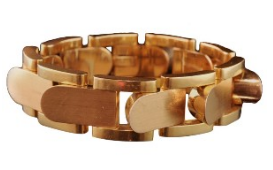 The consequences of record high prices for gold go beyond the diminishing ability of pearl and bead stringers to use gold in their work. As of this writing, gold is north of $1,600 per ounce and at least one expert is predicting gold will reach $1,900 an ounce this fall.
The consequences of record high prices for gold go beyond the diminishing ability of pearl and bead stringers to use gold in their work. As of this writing, gold is north of $1,600 per ounce and at least one expert is predicting gold will reach $1,900 an ounce this fall.



